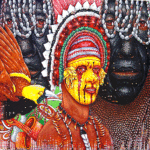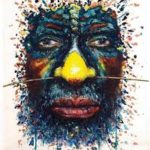What Is Copy Right?
Copyright is a legal term describing rights given to creators for their literary and artistic work.
This refers to works that are expressed in the form of performance, writing, picture or 3 dimensional figure e.g. sculpture. Related works are tools or mechanisms that provides a supporting role (e.g. producing music) to make that expressed work gain its physical form e.g. music being expressed in the form of audio or dance performance in a video. Those related works have their own rights in providing such a supporting role under Copyright.
What Is Covered By Copyright?
The kinds of works covered by copyright include: literary works such as novels, poems, plays, reference works, newspapers, and computer programs; databases; films, musical compositions, and choreography; artistic works such as paintings, drawings, photographs, and sculpture; architecture; and advertisements, maps, and technical drawings.
Why Protect Copyright?
Copyright and its related/neighboring rights are essential to human creativity, by giving creators incentives in the form of recognition and fair economic rewards. Under this system of rights, creators are assured that their works can be disseminated without fear of unauthorized copying or piracy. This in turn helps increase access to and enhances, the employment of culture, knowledge, and entertainment all over the world.
Creative Work Is Valuable
Any original piece of creative work is a potential asset. It can have considerable value now, or in the future. Also, economic & morals rights of a creator under copyright can last for 50 years of the creators life and even after he/she passes away IF he/she did not sell it off to another person or entity.
Increase Economic Benefits
Do not make copies of someone else’s work without their permission and profit from it without rewarding them with economic benefits. Help grow our local industry in music, fine arts, fashion, textile, computer software applications etc to increase job opportunities and wealth creation for PNG.
Consumer Protection
When you buy pirated copies of copyrighted works such as music, movies, video games or books, you buy them at very low prices and as such you are not protected from poor quality or faulty copies. As a consumer you must demand quality for the money you spend on goods you purchase.
Save Our Creative Industry
When you download free media content or share freely with others, you contribute to killing our music and creative arts industry. Because you deny them of their right to make money from their talent. Help Save Our Creative Industry By Buying Original Versions Only!
What Rights Does Copyright Provide?
The creators of original works protected by copyright, and their heirs, have certain basic rights. They hold the exclusive right to use or authorize others to use the work on agreed terms. The creator of a work can prohibit or authorize:
- Its reproduction in various forms, such as printed publication in various forms, such as printed publication or sound recording;
- Its public performance, as in a play or musical work;
- Recording of it, for example in the form of compact discs, cassettes or videotapes;
- Its broadcasting, by radio, cable, satellite.
- Its translation into other languages, or its adaptation such as novel onto screenplay.
Many creative works protected by copyright require mass distribution, communication, and financial investment, for their dissemination (for example, publications, sound recordings, and films); hence, creators often sell the right to their work to individuals or companies best able to market the works in return for payment. These payments are often made dependent in the actual use of the work, and are then referred to as royalties.
The economic rights have a time limit, according to the relevant WIPO treaties, of 50 years after the creator’s death. National law may establish longer time limits, the limit enables both creator and their heirs to benefit financially for reasonable period. Copyright protection also includes moral rights, which involve the right to claim authorship of a work, and the right to oppose changes to it that could harm the creator’s reputation.
The creator or the owner of the copyright in a work can enforce rights administratively and in the courts, by inspections of premises of evidence of production or possession of illegally made pirated goods related to protected works. The owner may obtain court orders to stop such activities, as well as seek damages for loss of financial rewards and recognition.
What Rights Are Protected Under Copyright?
A field of rights related to copyright has rapidly developed over the last 50 years. These related/neighboring rights grew up around copyrighted works, and provide similar, although often more limited and of shorter duration, rights to:
- Performing artists (such as actors and musicians) in their performances;
- Producer of sounds recordings (for example, cassettes, recordings and compact discs) in their recordings.
- Broadcasting organizations in their radio and television programs.
Copyright does NOT protect ideas or mere fact. This includes procedures, systems, method of operation, concept, principle, discovery or mere data, whether expressed, described, explained or illustrated or embodied in a work. In addition, any other text of a legislative, administrative or legal nature or any official translation thereof is not protected.
Examples include: National Gazette, a new system of voting, a card index system for filing employee’s details of name and address, registration forms for incorporating a company etc.
What Are Related Rights or Neighboring Rights?
It is a field of rights related to copyright has rapidly developed over the last 50 years. These related/ neighboring rights grew up around copyrighted works, and provide similar, although often more limited and of shorter duration.
Related or neighboring rights emanate from or originated out from copyright works. These rights are similar to copyright but are limited and of shorter duration.
This rights are categorized into;
- Performers’ rights; rights of actors, singers, musicians, dancers and other persons who perform literary, artistic, dramatic works etc. The duration of protection is 50 years starting from the year the performance was fixed in a device whereby the performance can be perceived, reproduced or communicated through.
- Recording rights; rights of producers of sound recordings who record sounds into cassettes or compact discs etc. The duration of protection is 50 years starting after the year the recording was published.
- Broadcasting rights; rights of broadcasting organizations in their radio and television programs. The duration of protection is 50 years starting from the moment the broadcasting takes place.
Why Is It That Ideas or Concepts Cannot Be Protected Under Copyright?
All copyright works have their basis on an idea. But Copyright cannot protect abstract ideas. Copyright protects the author’s mode of expression such as writing or painting to expose that idea.
All copyright works have their basis on an idea. But Copyright cannot protect abstract ideas. Copyright is interested to protect the form in which those ideas are expressed. It is that expression that makes a work original.
Different works about the same idea will be protected by copyright as long as they express this idea in an original and tangible manner. For example more than one person may have an idea about writing a book on a boy who rose from rags to riches but all of them will have different characters in the book or the story may take place in different places.
What Are Some Of The Examples Of Work Protected Under Copyright?
Examples of literary works: novels, poems, plays, newspapers and computer programs; database; films, musical compositions, and choreography, etc.Examples of artistic works: paintings, drawings, photographs, and sculpture; architecture; and advertisements, maps, and technical drawings, etc.
Examples of literary works: novels, poems, plays, newspapers and computer programs; database; films, musical compositions, and choreography, etc.
Examples of artistic works: paintings, drawings, photographs, and sculpture; architecture; and advertisements, maps, and technical drawings, etc.
Examples of derivative works: A movie that was made based on a novel, data collected from a study for all the different species of fish in a geographical area and collated into a database. Translating an English version of a book into another foreign language. Transforming a movie into a video game or vice versa.
How Is Copyright Protected in PNG?
Copyright itself does not depend on official registration procedures. A created work is considered protected by copyright as soon as it exists. However, many countries have a national copyright office and some laws allow for registration of works for the purposes of, for example, identifying and distinguishing titles of works.
Owners of works that are considered protectable under the copyright law must enforce their rights by the use of encircled “c” i.e. © or a published statement on the work as such “Copyright 2017, Joe Blow”
The author’s original work is automatically entitled for protection under the Copyright Act as soon as it is created. The author acquires exclusive rights upon creation of the work for the first time. There are no formality requirements to register a copy of the work with IPOPNG.
The author must publish a copyright notice on his work to inform and warn others of your Copyright. The copyright notice consist of the word “Copyright” or the symbol ©, the year the work was first published and author’s name. Example of a Copyright notice: “Copyright, 2017 Kopi Rait. You may also include the phrase “All rights reserved” to inform others to get your permission to use any or all of your rights.
How Has Copyright Kept Up With Advances In Technology?
The field of copyright and related/neighboring rights has expanded enormously with the technological progress of the last decades, which has brought new ways of spreading creations by such forms of worldwide communication as satellite broadcast and compact discs. Dissemination of works via the Internet is but the latest development which raises new questions concerning copyright, WIPO (World Intellectual Property Organization) is deeply involved in the ongoing international debate to shape new standards for copyright protection in cyberspace. The organization administers the WIPO Copyright Treaty and the WIPO Performance and Phonogram Treaty (often known together as the “Internet Treaty”), which set down international norms aimed at preventing unauthorized access to and use of creative works on the Internet or other digital networks.









